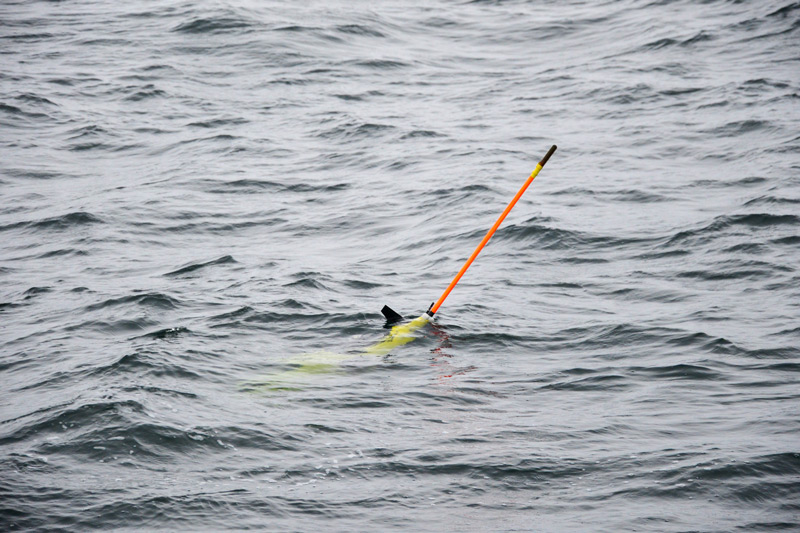

The ocean can be a hazardous place -- rough seas, dizzying currents, and interactions with large animals or foreign objects can threaten the well-being of ocean data science equipment. When it comes to deploying instruments in the ocean, scientists have a saying: “anything that goes in the water may never be seen again.” Thus, when instruments are successfully recovered, there is cause for celebration. The ADCP-Equipped Seagliders team glued their eyes to the water in an effort to spot the orange antenna of their glider. After pinpointing the glider on the horizon, Captain Andy Ellers shouts down from the pilot house to the team on the deck that is anxiously waiting for the glider to surface. Success! The researchers can now recover this glider and reveal the data it has been collecting in the waters off of La Push, Washington.